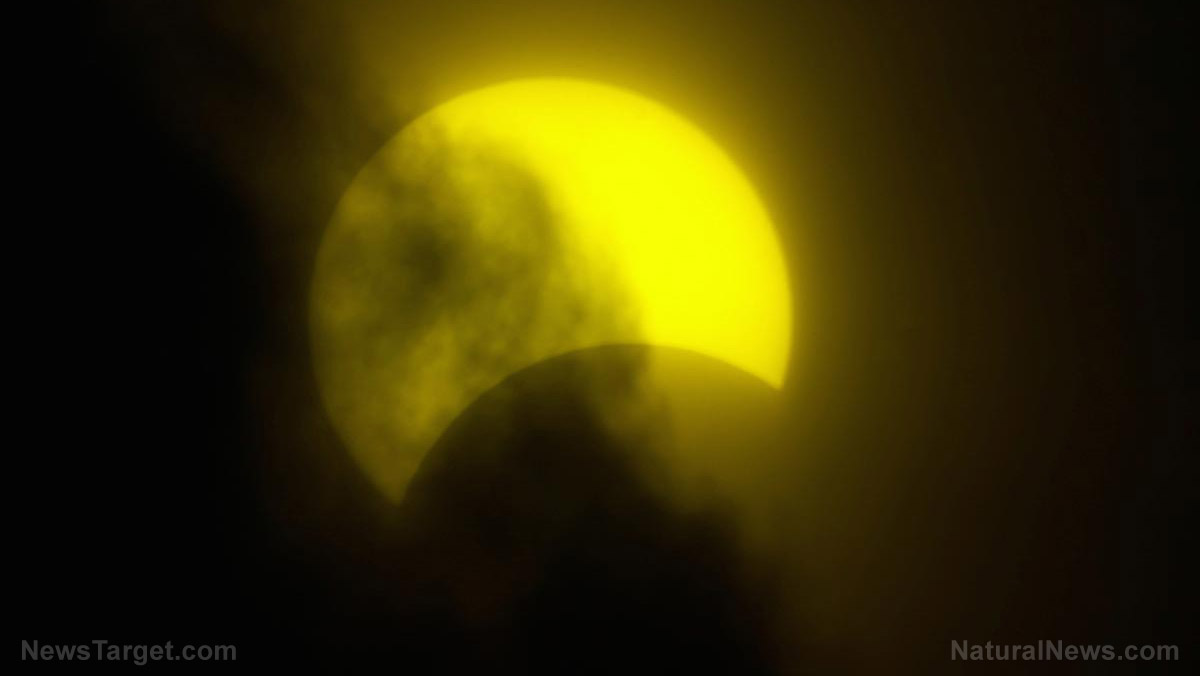
The Treasure of Villena is a hoard of 59 gold-plated objects found in 1963 in southeastern Spain. It was discovered by a team led by archaeologist Jose Maria Soler while the team was excavating a dry river bed, the Rambla del Panadero, three miles north of the city of Villena.
Researchers examining the gold objects found meteoric iron in two pieces of jewelry in the set of artifacts that make up the hoard. The meteoric iron is an early-universe protoplanetary disk remnant found in meteorites made of iron and nickel.
According to the analysis, the gold-coated cap and a C-shaped bracelet contained extraterrestrial material from a meteor that crashed into Earth one million years ago as per the team's estimates. The cap is made up of 5.5 percent of the meteoric iron, while the bracelet contains just 2.8 percent. (Related: Harvard physicist wants to prove METEORITE that fell near Papua New Guinea is an ALIEN PROBE.)
Roughly 90 percent of the Treasure of Villena collection was reportedly made with 23.5-carat gold and includes 11 bowls, three bottles and 28 bracelets. The treasures have since been housed at the city's Museum of Archaeology, allowing the new analysis that uncovered the alien metals.
"Since they come from outer space, they are composed of iron-nickel alloy with a variable nickel composition greater than five percent by weight," researchers wrote. "They also contain other minor and trace chemical elements, cobalt being one of the most significant."
Human knowledge is under attack! Governments and powerful corporations are using censorship to wipe out humanity's knowledge base about nutrition, herbs, self-reliance, natural immunity, food production, preparedness and much more. We are preserving human knowledge using AI technology while building the infrastructure of human freedom. Learn about our free, non-commercial AI / LLM project here. Support our efforts to build the infrastructure of human freedom by shopping at HealthRangerStore.com, featuring lab-tested, certified organic, non-GMO foods and nutritional solutions.
Meanwhile, the study's senior author Ignacio Montero Ruiz, a researcher at Spain's Institute of History, told Live Science that "iron technology is completely different from the copper-based metallurgy and to the noble metals (gold and silver). So, people who started to work with meteoritic iron and later with terrestrial iron must [have had to] innovate and develop new technology." However, he added, the levels of nickel in terrestrial iron are generally low or very low and frequently not detectable in analysis.
Artifacts all over the world containing "alien minerals"
In 2016, researchers at the Egyptian Museum in Cairo, Milan Polytechnic and Pisa University announced a dagger, intricately decorated and encased within a golden sheath, had a blade made from iron from a meteorite. The team used a similar technique to examine the composition of the metal, matching it to a meteorite named Kharga, which was found in 2000 on the Maras Matruh plateau in Egypt, 150 miles west of Alexandria.
The dagger is considered to be one of the most outstanding items to have been retrieved from Tutankhamun's sarcophagus, the burial place of the pharaoh of the Eighteenth Dynasty of ancient Egypt in Luxor, due to the fine metalwork it showed. The handle has a finely embossed gold handle with a crystal pommel while the sheath was decorated with a floral motif, feather patterns and a jackal's head. The scientists deemed that the fallen meteorites were used in fashion objects back then.
Writing in the journal Meteoritics and Planetary Science, the researchers, led by Daniela Comelli, said: "Our study confirms that ancient Egyptians attributed great value to meteoritic iron for the production of precious objects."
Earlier this year, geologists also discovered two alien minerals unknown to Earth in a small 2.5-ounce 70-gram fragment of the fifteen thousand-kilogram fallen comet known as the El Ali meteorite in Somalia.
While sampling a slice, scientists stumbled upon an unknown mineral in the meteorite. Only after analyzing the segment in a lab did they realize they had discovered something completely new. Researchers believe that this might help them understand more about asteroids and how they form as well as the possibility of locating more.
Chris Herd, curator and professor in the Department of Earth & Atmospheric Sciences at the University of Alberta, named one of the alien deposits 'elaliite' after the meteorite. The other he termed 'elkinstantonite' after Professor Lindy Elkins-Tanto, the vice president of the Interplanetary Initiative at Arizona State University. Elkins-Tanton is also the chief investigator of what they call the "Psyche" mission, part of the NASA operation to reach Asteroid Psyche 16 last year.
"Whenever you find a new mineral, it means that the actual geological conditions, the chemistry of the rock, was different than what's been found before. That's what makes this exciting: In this particular meteorite you have two officially described minerals that are new to science," Herd said.
Visit Artifacts.news for more similar stories.
Watch the video below that tackles ancient writings or markings about "could-be" lost civilization in space on meteorite rocks.
This video is from the High Hopes on Brighteon.com.
More related stories:
Meteorite impact 29M years ago responsible for desert glass, geologists say.
NASA confirms 1,000-lb meteoroid the cause behind loud explosion reported in Texas.
Sources include:
Please contact us for more information.






















